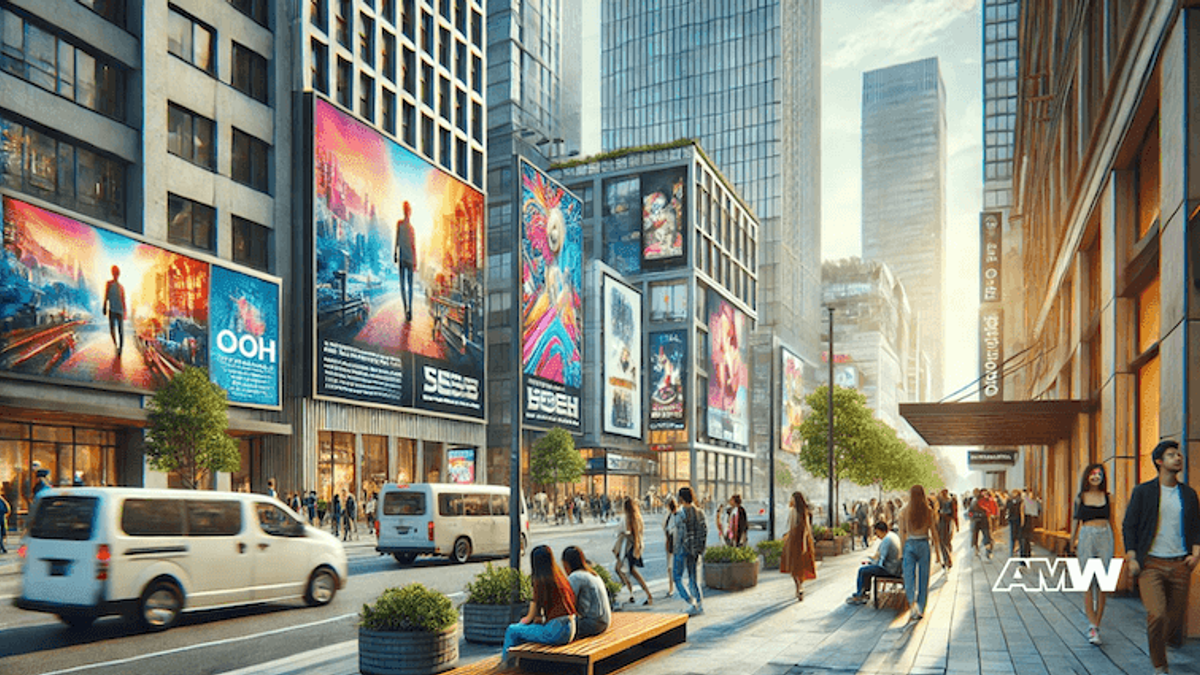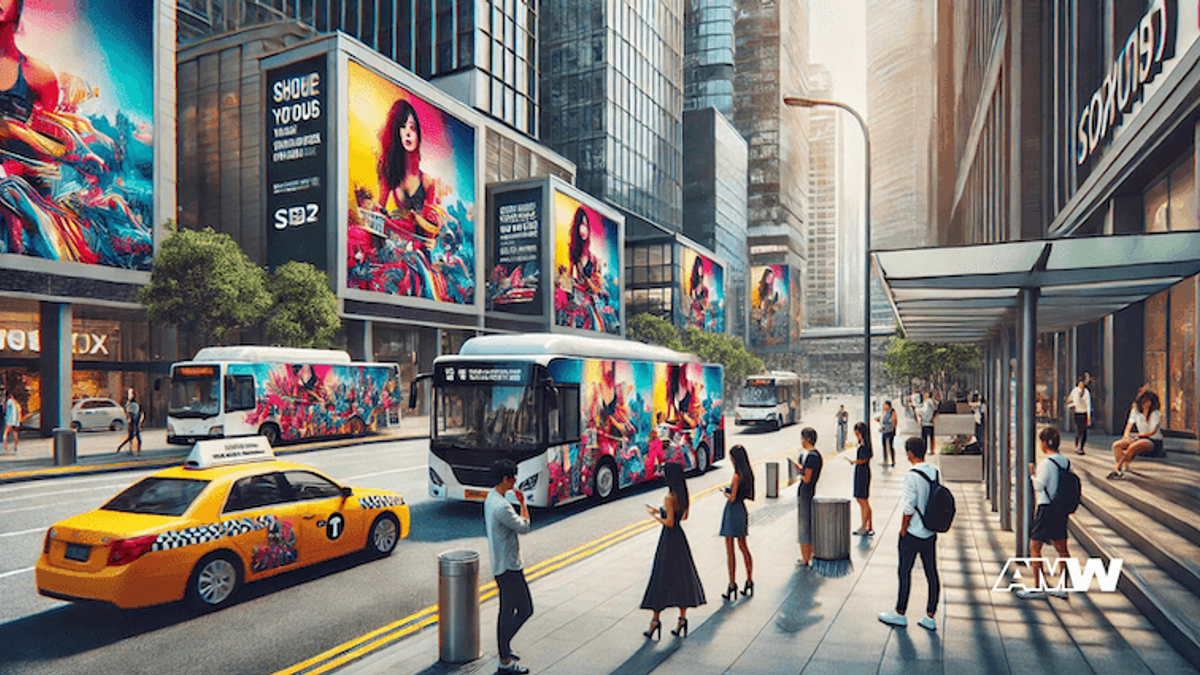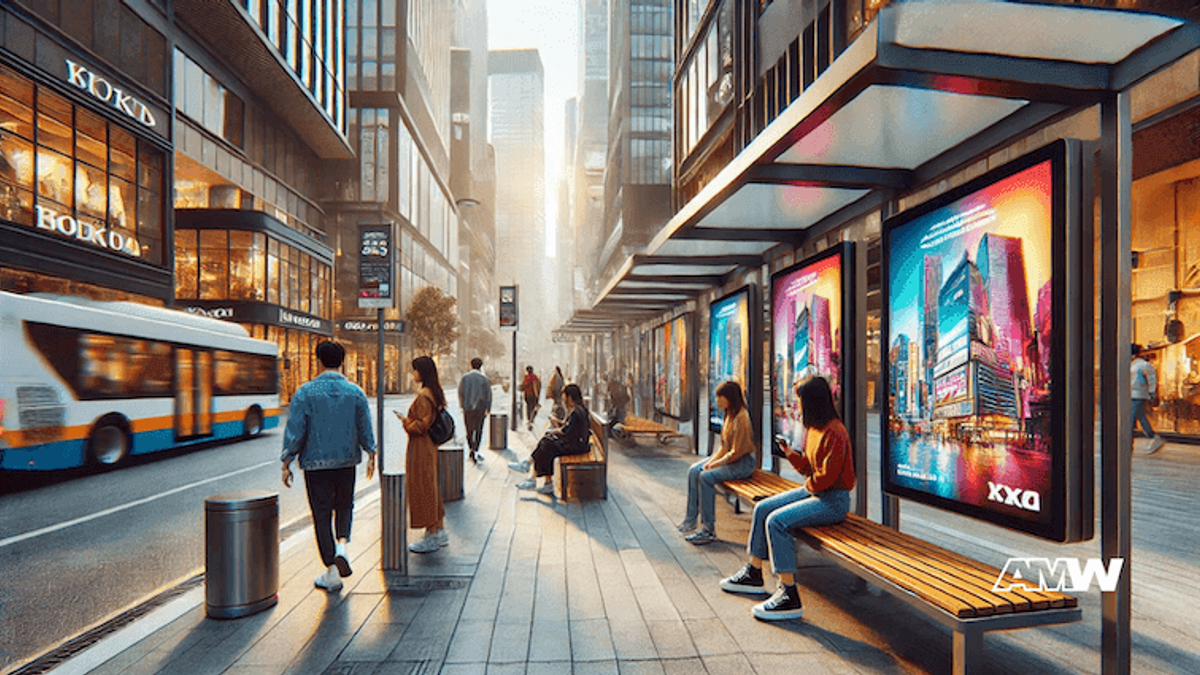Out-of-House Advertising: Mastering Out-Of-Home (OOH) Advertising

Out-of-home advertising, often referred to as OOH advertising, plays a crucial role in modern marketing. It encompasses a variety of formats designed to reach consumers when they are outside their homes, such as billboards, transit ads, street furniture, and digital screens. Unlike online advertising, which targets individuals on personal devices, OOH media captures the attention of a broad audience in high-traffic areas and public spaces.
Quick Summary
Out-of-home advertising, or OOH advertising, is essential in modern marketing, utilizing formats like billboards, transit ads, and digital screens to engage consumers in public spaces. Its integration with digital campaigns enhances brand visibility and awareness. The rise of digital out-of-home (DOOH) allows for real-time, dynamic content that connects with audiences effectively. By employing strategic location selection, data analytics, and creative designs, brands can optimize their OOH campa
The importance of OOH advertising today cannot be overstated. It complements other media channels by providing high visibility and long-term exposure, which helps increase brand awareness. OOH campaigns are especially effective when integrated with digital campaigns, creating a seamless experience for the target audience.
Digital out-of-home (DOOH) advertising, such as digital billboards, has revolutionized the industry, allowing advertisers to deliver dynamic content and real-time updates that engage consumers in more meaningful ways.
Ready to Grow Your Business?
Get a free consultation and custom strategy tailored to your goals.
Understanding Out-of-House Advertising

Out of house advertising refers to any advertising medium that targets consumers when they are not at home. This includes traditional formats like billboard advertising and transit ads, as well as more modern approaches like digital OOH, which uses digital screens to display advertisements.
OOH advertising has a long history, dating back to ancient civilizations that used walls and public spaces to display messages. The industry has evolved significantly, with traditional OOH formats like static billboards and posters being staples for decades. The industry has been changed by digital technology. This has led to the rise of DOOH ads, which use digital screens and dynamic media to engage audiences.
Difference Between Traditional and Digital OOH Advertising
Traditional OOH advertising relies on static images displayed on billboards, bus shelters, and other ad spaces. These ads are typically unchanged for a set period, providing consistent exposure. Digital out-of-home (OOH) advertising uses digital screens to display dynamic content that can be changed directly. This flexibility allows advertisers to customize their messages based on factors like time of day, weather, and demographics, resulting in more targeted campaigns.
Key Components of OOH Advertising

Billboards
Billboard advertising is one of the most recognized forms of out-of-house advertising. Positioned in high visibility locations like highways and city centers, billboards offer large format ad space that captures the attention of vehicular traffic and pedestrians. This type of outdoor advertising is highly effective for reaching a wide audience and reinforcing brand messages.
Transit Advertising (Buses, Trains, Taxis)
Transit advertising includes ads placed on and inside buses, trains, and taxis. This form of mobile advertising reaches commuters and travelers in transit hubs, ensuring high visibility. Ads on vehicles can cover extensive geographic areas, making them a cost-effective way to reach specific audiences. For example, airport advertising targets high-income travelers, while ads on local buses reach everyday commuters.
Street Furniture (Bus Shelters, Kiosks)
Street furniture advertising involves placing ads on public amenities like bus shelters and kiosks. These locations offer valuable ad space in high-traffic areas where consumers spend time waiting or passing by. Ads on street furniture are effective for targeting urban audiences and creating a strong brand presence in densely populated areas. Bus shelters and kiosks provide a captive audience, ensuring that the ads receive significant attention.
Digital Out of Home (DOOH) Advertising
Digital out-of-home (DOOH) advertising leverages digital screens to display dynamic content. Examples of DOOH ads include digital billboards on highways, screens in convenience stores, and displays in transit hubs. DOOH advertising allows for real-time updates, making it possible to deliver timely and relevant messages. Programmatic DOOH platforms use smart data to deliver targeted ads, enhancing the effectiveness of OOH campaigns.
By incorporating these various OOH formats into their advertising campaigns, brands can effectively reach and engage their target audiences. OOH advertising not only complements other media channels but also provides unique opportunities for high-impact, cost-effective marketing.
Benefits of OOH Advertising

Out-of-house advertising (OOH advertising) offers numerous benefits that can enhance the effectiveness of ad campaigns.
High Reach and Visibility
OOH advertising provides unparalleled reach and visibility, capturing the attention of consumers in high-traffic areas and public spaces. Whether through digital billboards along busy highways or ads on bus shelters in city centers, OOH ads are seen by thousands of people every day. This extensive reach ensures that advertising campaigns achieve high impressions and effectively increase brand awareness.
Targeting Specific Demographics
OOH advertising allows for precise targeting of specific demographics. Advertisers can select locations that align with their target audience's daily routines and behaviors. For instance, placing ads in airport advertising spaces targets frequent travelers, while ads in health clubs or gas stations reach fitness enthusiasts and motorists, respectively. This strategic placement ensures that OOH campaigns reach the right people at the right time.
Cost-Effective Compared to Other Advertising Mediums
Compared to other media channels, OOH advertising is often more cost-effective. The cost per thousand impressions for OOH ads is typically lower than that of online advertising, making it an efficient way to reach large audiences. Additionally, the long-term exposure provided by static images and digital screens in high-visibility locations ensures that the investment in OOH inventory yields sustained brand visibility.
Creating Brand Experiences
OOH advertising is known for creating memorable brand experiences. The large format and high-impact visuals of billboard advertising, combined with the dynamic content displayed on digital screens, capture consumer attention and leave lasting impressions. Creative and innovative use of ad space, such as interactive digital OOH ads, further engages audiences and enhances brand recall.
Strategies for Mastering OOH Advertising

To maximize the effectiveness of OOH advertising campaigns, advertisers should adopt the following strategies:
Ready to Grow Your Business?
Get a free consultation and custom strategy tailored to your goals.
Selecting the Right Locations
Choosing the right locations for OOH ads is crucial for reaching the target audience. High-traffic areas, such as city centers, transit hubs, and convenience stores, offer prime ad space for maximum exposure. Understanding the traffic patterns and behaviors of the target audience helps in selecting locations that will have the most significant impact.
Digital Campaigns
Integrating OOH advertising with digital campaigns enhances the overall effectiveness of both media channels. Coordinating the messaging across digital screens and online advertising ensures a cohesive brand narrative. For example, a digital campaign promoting a new product can be complemented by OOH ads in strategic locations, reinforcing the message and driving consumer engagement across multiple touchpoints.
Data and Analytics
Leveraging data and analytics is basic for optimizing OOH advertising campaigns. Smart data allows advertisers to understand consumer behaviors and preferences, enabling more precise targeting. Tools that analyze traffic patterns and demographic data can help in selecting the most effective OOH ad spaces. Programmatic DOOH platforms further enhance targeting capabilities by delivering dynamic content based on real-time conditions.
Creativity
Creativity is key in OOH advertising. Unique and eye-catching designs, interactive elements, and dynamic media can significantly increase engagement. For instance, digital billboards can display real-time updates or interactive content that encourages consumer interaction. Using innovative materials and technology, such as augmented reality, can also create memorable experiences that stand out in consumers' minds.
Measuring OOH Advertising

Key Performance Indicators (KPIs)
Measuring the effectiveness of OOH advertising involves tracking key performance indicators (KPIs) such as reach, frequency, and engagement. Metrics like impressions, which indicate how many people have seen the OOH ads, and the recall rate, which measures how well the audience remembers the ads, are crucial for evaluating the success of OOH campaigns.
Tools and Technologies
Several tools and technologies can help measure the performance of OOH advertising. Digital screens and billboards often come with integrated analytics that track viewer engagement and interaction. Mobile can also be used to gather data on consumer movements and behaviors, providing insights into how OOH ads influence their actions. Additionally, third-party tools can aggregate performance data from various OOH formats, offering a comprehensive view of campaign effectiveness.
By incorporating these strategies and leveraging advanced measurement, advertisers can maximize their OOH campaigns. OOH advertising not only complements other media channels but also provides unique opportunities for high-impact, cost-effective marketing that captures consumer attention and drives brand awareness.
Trends in OOH Advertising

As out-of-house advertising (OOH advertising) continues to evolve, several future trends are shaping the industry. These advancements promise to enhance the effectiveness and reach of OOH media, making it an even more powerful tool for advertisers.
Digital and Interactive OOH
One of the most significant trends in OOH advertising is the ongoing advancement in digital and interactive OOH formats. Digital billboards and screens are getting more advanced. This allows for dynamic content that can be updated in real-time. This flexibility enables advertisers to tailor their messages based on current events, weather conditions, or even time of day, ensuring that the content is always relevant and engaging. Interactive digital screens, which allow consumers to engage directly with the ads through touch or mobile devices, are also gaining popularity. These innovations are transforming static images into dynamic media, creating more immersive and memorable brand experiences.
AI and Machine Learning
These have a growing role in the OOH industry. These technologies enable more precise targeting and measurement by analyzing data to predict traffic patterns and consumer behavior. AI can optimize the placement and timing of ads, enhancing the efficiency and impact of OOH campaigns. Machine learning algorithms can also personalize content on digital screens based on demographic data, further increasing engagement and effectiveness.
Conclusion

Out-of-house advertising remains a vital component of the modern marketing mix. Its ability to reach broad and diverse audiences, create high-impact visuals, and integrate seamlessly with digital campaigns makes it an indispensable tool for brands looking to increase brand awareness and engagement. The advancements in digital and interactive OOH, coupled with the strategic use of data and sustainable practices, ensure that OOH advertising continues to evolve and remain relevant in the digital age. Incorporating OOH into a holistic marketing strategy can provide significant benefits, driving both immediate results and long-term brand growth.
FAQ

What does out of home mean in advertising?
Out-of-home advertising includes ads like billboards, transit ads, and digital screens in public places.
Ready to Grow Your Business?
Get a free consultation and custom strategy tailored to your goals.
How effective is out-of-home advertising?
OOH advertising works well because it can reach a large audience, create strong visual impressions, and complement digital advertising strategies.
What is included in out-of-home advertising?
OOH advertising includes billboards, transit ads, street furniture, and digital out-of-home (DOOH) advertising like digital billboards and screens.
What does "OOH" mean in media?
In media, "OOH" stands for out-of-home advertising, encompassing all advertising formats seen by consumers outside of their homes.
What is an example of digital OOH?
An example of digital OOH is digital billboards that display changing advertisements using digital technology.
What is the OOH media strategy?
The OOH media strategy involves selecting the right locations, integrating with digital campaigns, and using data for targeted advertising to maximize impact and ROI.
What are the essentials of OOH advertising?
The essentials of OOH advertising include high-visibility locations, engaging and creative content, effective targeting, and accurate measurement of campaign performance.
What are OOH platforms?
OOH platforms refer to the various mediums used for out-of-home advertising, such as billboards, transit ads, and digital screens.

Ready to Grow Your Business?
Get a free consultation and custom strategy tailored to your goals.
Related Articles

10 Proven Strategies to Succeed With Out-of-Home Advertising | Expert Guide
Unlock the power of out-of-home advertising with strategic insights on location selection, creative design, and campaign integration. Learn how digital innovation, programmatic buying, and...

Leveraging Outdoor Ads for Effective PR and Media Exposure
In public relations and media, capturing and sustaining your target audience's attention is more crucial than ever. As the digital space becomes more cluttered with myriad messages vying for atten

Integrated Marketing Communications for Brand Success
Ever wonder how some brands seem to be everywhere you look, always delivering the same message? It's the magic of Integrated Marketing Communications (IMC) at work. What Exactly Is Integrated M